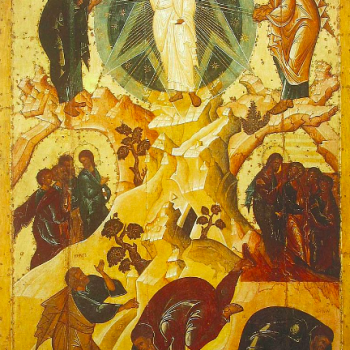
Mardi Gras means “Fat Tuesday” (in French). It refers to a religious holiday known as Shrove Tuesday (meaning literally, “to absolve” one’s sins through confession). Shrove Tuesday or Mardi Gras is the day before Ash Wednesday. On that holy Tuesday many go to confession, select what they will “sacrifice” or “give up” for Lent, (at the church) ashes are burned in preparation for Ash Wednesday, and the eating of pancakes or other treats is common—in anticipation of a more restrictive diet during the Lenten season.
While Shrove Tuesday has a moderate celebratory tone, it received the French name Mardi Gras because some participants saw that Tuesday before Lent as a time to “get out” any excess or sinful desires prior to starting their repentance (beginning with Ash Wednesday). If you have ever participated in the Mardi Gras celebrations of New Orleans, you know all about excess! Thus, Mardi Gras is seen by the more faithful as a corruption of Shrove Tuesday, and as contrary to the spirit of repentance that is supposed to accompany the season of Lent.
Ash Wednesday—or the day after Mardi Gras—is the first day of the Lenten season in many Christian traditions; most notably Roman Catholicism, Eastern Orthodoxy, Anglicanism, Lutheranism, and Methodism—though others also participate. It is a day of prayer, penance, and fasting; and it inaugurates the six-week season of Lent, through which many observant Christians prepare themselves for Easter via daily sacrifices in the form of fasting, prayer, engagement in self-examination, and seeking to improve their devotion to God.
The name “Ash Wednesday” comes from the fact that, in many High-Church Christian denominations, this holy day is commemorated by making a trek to one’s local church to receive the placement of ashes upon the forehead—often in the shape of a cross—as a symbol of repentance and remorse for one’s sinful ways. Other common observances of Ash Wednesday include creating what is traditionally known as a “Lenten calendar” (i.e., a 40-day countdown calendar, marking off the days between Ash Wednesday and Easter Sunday), and beginning one’s “Lenten sacrifice” (i.e., the item or items one will give up or “sacrifice” during the 40-days of Lent, and perhaps beyond. See our “Answer” to the question, “Why Do Christians Celebrate Lent?”).
Ashes were a common symbol in antiquity for repentance, mourning and sorrow—particularly sorrow for sin. (See, for example, 2 Samuel 13:19; Esther 4:1-3; Job 2:8; Isaiah 58:5; Matthew 11:21; Luke 10:13) Thus, the penitent receives blessed ashes upon the head, while the priest pronounces the words “Repent ye, and believe the gospel” (Mark 1:15) or “Dust thou art, and unto dust shalt thou return” (Genesis 3:19). (The former of these two declarations has been more common than the latter in Roman Catholicism in the post-Vatican II era.)
Lent, which Ash Wednesday begins, is based on something Jesus did in the New Testament, where He is said to have spent 40-days in the wilderness, praying, fasting, and battling the temptations of the Devil. During the Lenten season, Christians seek to mirror Jesus’s spiritual journey by trying to renew themselves spiritually through acts of self-denial, which help them to more deeply connect with God. Since Easter commemorates Jesus’s resurrection from the dead, for many Christians, Lent is a time to prepare to symbolical be raised from “spiritual death” through the self-denial and spiritual improvement practiced during these six weeks. Thus, Ash Wednesday applies the ashes that symbolize our fallenness; and Easter Sunday—the day on which baptisms commonly took place—washes away those ashes through the redemptive sacrifice of the Lord Jesus Christ. The entire Lenten season is a process of sorrow, repentance, change, forgiveness and ultimate redemption.
The ashes used on Ash Wednesday are often made by burning palm branches kept from the previous year’s Palm Sunday services—Palm Sunday being the Sunday immediately before Easter Sunday. (It is the Sunday that commemorates Christ’s “triumphal entry” into Jerusalem only days prior to his crucifixion.) The palm branches are burnt, blessed—often by sprinkling holy water on them—and then applied to the crown of the head or to the forehead of the penitent. While in times past sprinkling ashes on top of the head, or on the crown of the head, was most common; because in certain denominations (e.g., Roman Catholicism and Eastern Orthodoxy) women often kept their heads covered when it a church building, placing the ashes on the forehead in the form of the cross became the more popular way to perform this sacramental act—particularly in English-speaking congregations.
While each denomination does things differently, many Christians will fast from meats on Ash Wednesday, Good Friday, and on other Fridays throughout the Lenten season. Some highly observant Christians will not eat meat at all during six-week Lenten season, starting on Ash Wednesday and carrying on until Eastern Morn.
With all of that said, the basic focus of Ash Wednesday is on the fallen and sinful state of humanity. It is an invitation to contemplate the ways in which one has let down one’s God, one’s family, and one’s self; and to repent, change, increase one’s spirituality, and become more holy—more like the God we profess to worship.
3/23/2021 6:32:39 PM










